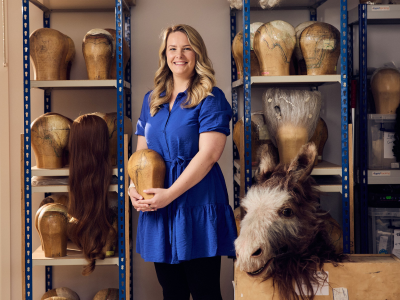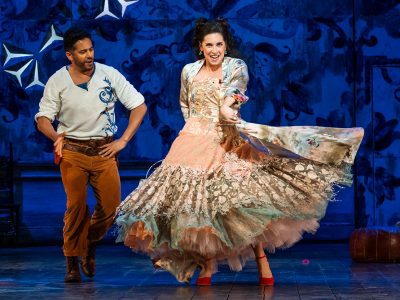
The music
Discover the music of Stravinsky's The Rake's Progress
The music
Igor Stravinsky (1882-1971) was one of the dominant, defining, and most influential composers of the 20th century. The stylistic development of his music reflected and shaped the major trends of the century and of modernism. Although The Rake’s Progress was his first full-length opera, the composer had already experimented extensively with one-act operas, hybrid theatre-opera, oratorio-opera, and dance-opera pieces, including The Nightingale (1914), Renard (1916), Mavra (1922), and Oedipus Rex (1927).
After moving to America in 1939, Stravinsky developed a desire to compose an opera in English, and began to consider possible subjects. In 1947 he attended an exhibition of Hogarth’s series of paintings and engravings A Rake’s Progress in Chicago and found his inspiration.
Stravinsky’s friend and neighbour, Aldous Huxley, suggested the composer approach poet WH Auden to write the libretto. The two were a natural artistic fit and, joined by Auden’s partner, Chester Kallman (co-librettist), quickly sketched the outline for the piece. Stravinsky received the first draft of the text in 1948 and the opera was finished in 1951.

Hogarth, The Arrest
Musical & Dramatic Style
- Often described as the final work of Stravinsky’s neoclassical period (in which the composer took inspiration from, quoted, and explored historical musical styles, particularly those of the baroque and classical eras), the impact of The Rake’s Progress comes from its collision of old-fashioned musical formality and anarchic contemporary harmony and dramaturgy.
- Stravinsky’s style may be period-inspired in The Rake’s Progress (‘I will lace each aria into a tight corset’) but it’s pure Stravinsky. He uses musical conventions only to subvert them: cadences land where we don’t expect, basslines refuse to resolve onto tonic notes, trills don’t resolve where they should. If this is Mozart (the composer dubbed himself ‘Mozart’s continuer’), it’s Mozart as seen in a funfair’s distorting hall of mirrors.
- ‘Art is freer when it is more limited… my freedom will be so much the greater and more meaningful the more narrowly I limit my field of action and the more I surround myself with obstacles’ (Stravinsky, The Poetics of Music). The Rake’s Progress is a musical exercise in limitation: a “number” opera divided into discrete arias, duets, and ensembles, all strung together with recitative (a cross between singing and speaking). It’s a self-consciously old-fashioned style, designed both to draw attention to the artificiality of opera as a form, and to explore creativity within tightly prescribed limits. Classical/baroque opera gives Stravinsky a musical structure to kick against and subvert.
- ‘I believe “music drama” and “opera” to be two very different things. My work is a devotion to the latter’ (Stravinsky). The Rake’s Progress is a rejection both of Richard Wagner’s music-drama and of the expressionist works (like Berg’s Wozzeck) that it inspired. These passionate, sprawling musical statements were at odds with Stravinsky’s belief that you could express more in restraint than excess.












